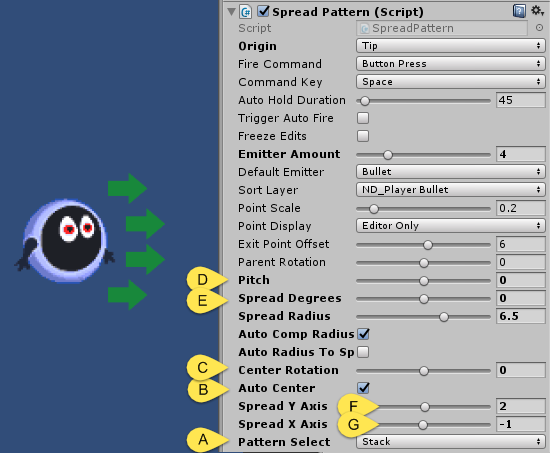The default Pattern Select orientation is set to Radial, however you can change it to Stack which can function similarly but is generally better for creating parallel rather than arcing emitter patterns.

[A] Change Pattern Select to Stack and notice it changes the placement of the entire pattern. This is because the way Auto Center works with a Stack is different from Radial. For a Stack pattern, you can simultaneously control Center Rotation while Auto Center is enabled. In this scenario, rotational centering is done by setting Center Rotation to 0, while Auto Center ensures the pattern is vertically anchored relative to the center point.
Go ahead and [B] enable Auto Center and [C] set Center Rotation to 0.
Another key difference between a Stack and Radial pattern is how they utilize the Spread X/Y Axis controls. Set the [D] Pitch to 0, [E] Spread Degrees to 0 and increase the [F] Spread Y Axis slider to 2. Notice how it creates a stack formation. Create a “V” formation by [G] decreasing the Spread X Axis slider to -1.
Change back to a Radial pattern and notice that the Spread Y Axis and Spread X Axis values have changed the placement of the relative center point. In Radial mode this is the normal function of these sliders.
Experiment with changing the Spread Degrees value to see how this can create a “wobble-like” motion while modifying Spread Y Axis and Spread X Axis values change the area of the effect.
